Literary rating: ★★
Kick-butt quotient: ☆☆☆☆
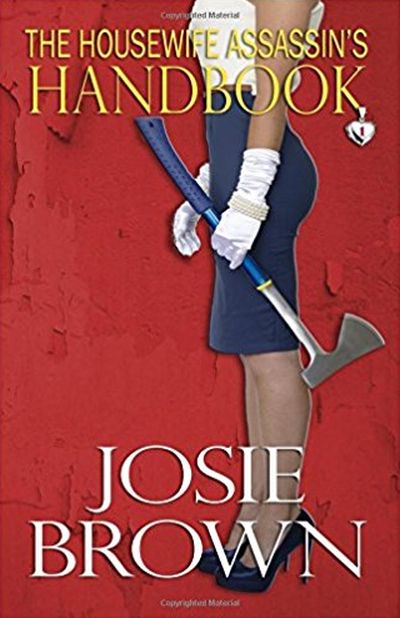 My preferred format for reading is paper; and that’s the only format I support financially, since the only language Big Publishing understands is dollars and cents. Even for a reader like myself, though, e-books have their uses. Writers can offer particular books for free in that format, and that makes it possible to read them first in order to check the quality before you buy the paper edition. And sometimes that opportunity saves you money that would have been wasted if you’d taken a chance on the paper book to begin with! For me, this series opener (which Brown makes available free in e-book format on a permanent basis) was one of those books I was thankful I didn’t have to spend money on, which I’d have regretted.
My preferred format for reading is paper; and that’s the only format I support financially, since the only language Big Publishing understands is dollars and cents. Even for a reader like myself, though, e-books have their uses. Writers can offer particular books for free in that format, and that makes it possible to read them first in order to check the quality before you buy the paper edition. And sometimes that opportunity saves you money that would have been wasted if you’d taken a chance on the paper book to begin with! For me, this series opener (which Brown makes available free in e-book format on a permanent basis) was one of those books I was thankful I didn’t have to spend money on, which I’d have regretted.
The novel’s premise is intriguing enough, and the harrowing first chapter grabbed my attention effectively. We’re plunged into the action right away, with present-day events narrated by protagonist Donna in present tense. At the first opportunity, she drops back into a flashback (in past tense) that gives us an introduction to her childhood and family background –and yes, that’s relevant!– how she met her husband, their few years together, and her discovery, after he was identified as the dead victim of a car wreck on the night she gave birth to their third child, that he had a BIG secret: the corporation he worked for was a front that contracted to do wet work for the CIA, and he was an assassin, most recently assigned to help bring down the Quorum, a shadowy organization of ex-government assassins who’ve gone rogue and are out for profit. (They planted the bomb in his car.) We also learn how, needing to support her kids and wanting to better protect them (long story!), and wanting vengeance on the kinds of scumbags who made her a widow, she subsequently agreed to go to work for Carl’s employer, in his old job. (That’s not as big a stretch as it would be for some women –she learned to shoot as a kid, is naturally talented for and very good at it, and met Carl at a firing range.)
While I was reading the first few chapters, I expected this to be a four-star read. The body of the novel itself (we’ll talk about the italicized chapter beginnings below!) actually is more serious in tone than comedic, although it does have some deadpan humor that arises from the incongruities of Donna’s job responsibilities vs. her domestic ones. Her reflections about the ethics of what she does aren’t approached flippantly, and she’s a well-drawn character who earned my sympathy and respect –a very tough woman, morally and physically, but essentially a good and decent person and a caring mom (who intends to survive and be there for her kids). Brown creates a situation that’s fraught with moral and emotional complexity and shades of gray to start with, and then ups the emotional ante exponentially with a new development –followed by some more really compelling twists and turns, the first one of which I didn’t see coming. (I did suspect the second one.) None of the other characters are developed as fully as Donna, but they’re believable, and the author does conjure a sense of place with the southern California setting (in Orange County). And I liked the depiction of family life, and Donna’s relationship with her kids.
In fairness, I also need to defend Donna against the complaint of one reviewer, who regards her as a moral pariah because she lies to her kids, at a very serious level. Well, yes, she does (although she doesn’t like that situation). But as a reality check, these kids are 12, 10 and 5 years old, with big mouths, limited impulse control, and a child’s immaturity and deficient understanding of danger and the complexities of real-world situations. Even if the lies involved are extreme, telling them the truth in a life-and-death situation, where things they do and say could have disastrous consequences, is not a course I’d advocate.
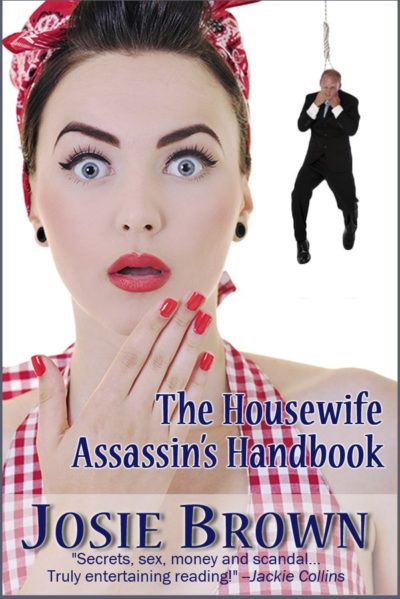 The principal problem I had here was that the plotting is simply not well thought out, and not convincing. One could argue that the essential premise is far-fetched; but I was okay with suspending disbelief that far. (Whether or not black ops organizations would hire a single mom with kids is a matter of speculation, since real life organizations like this don’t publicize their personnel policies. :-) ) But even within the premise Brown creates, much of her plotting simply doesn’t stand examination. Some of the major actions by the villain(s) are at cross-purposes with some of their other major actions; several events that take place here would involve the police in the story, at a level that couldn’t be ignored, but there’s no indication of that here; Donna’s reasoning for one major decision is weak and unconvincing; and Acme (the company she works for) would be much more actively involved in the decision-making at the end, not passive as it is here. Also, characters could not realistically suddenly just shrug off previously incapacitating wounds (which happens here twice), and there are other significant logical slips that took me out of the story. The author writes prolifically, but she apparently wrote this novel too quickly to take her craftsmanship in plotting seriously, or to put any real thought behind it. (That’s a real shame.)
The principal problem I had here was that the plotting is simply not well thought out, and not convincing. One could argue that the essential premise is far-fetched; but I was okay with suspending disbelief that far. (Whether or not black ops organizations would hire a single mom with kids is a matter of speculation, since real life organizations like this don’t publicize their personnel policies. :-) ) But even within the premise Brown creates, much of her plotting simply doesn’t stand examination. Some of the major actions by the villain(s) are at cross-purposes with some of their other major actions; several events that take place here would involve the police in the story, at a level that couldn’t be ignored, but there’s no indication of that here; Donna’s reasoning for one major decision is weak and unconvincing; and Acme (the company she works for) would be much more actively involved in the decision-making at the end, not passive as it is here. Also, characters could not realistically suddenly just shrug off previously incapacitating wounds (which happens here twice), and there are other significant logical slips that took me out of the story. The author writes prolifically, but she apparently wrote this novel too quickly to take her craftsmanship in plotting seriously, or to put any real thought behind it. (That’s a real shame.)
Finally, a word is in order about the titular “Handbook” aspect. As a gimmick here (and as nearly as I can tell, in the other 15 books of the series as well, though I haven’t read them) Brown prefaces each chapter with short, italicized snippets giving supposed household hints that blend home economics with mayhem. These are unrelated to the story-line (though some may have a passing thematic connection to something in the chapter), don’t advance it in any way, and don’t reflect any things that Donna might actually do. Instead, they’re intended to be humorous (often depending for their humor on exaggerations that are completely over the top). Some readers like these (one reviewer found them to be her favorite aspect of the book!); so as the saying goes, “Your mileage may vary.” Personally, though, their humor generally fell flat for me; it typically strains too hard, and comes across as weak (or nonexistent) and forced. I found them an irritating nuisance that the book would have been better off without. Good fiction doesn’t need gimmicks to appeal; and if the author had given us a tight, plausible, well-constructed plot, this novel wouldn’t have needed any gimmick either.
Ultimately, I gave this two stars rather than one, in consideration of its positive elements; and I did finish it (I had to see how it ended!). But I don’t plan to continue reading the series.
Note: The book includes several episodes of explicit sex –including one that’s very abusive and disgusting, although there’s a defensible literary reason for describing it– and other sexual situations (in the opening scene, Donna’s posing as a prostitute). There’s also some bad language, including the f-word (though in Donna’s vocabulary, the latter is only a verb used in unloving contexts, not an all-purpose adjective/adverb) and in the sexual scenes, vulgar terms for some body parts. Most of the other bad language here is strictly of the d- or h-word sort.
Author: Josie Brown
Publisher: Signal Press, available through Amazon, both for Kindle and as a printed book.
A version of this review previously appeared on Goodreads.





 Although I didn’t set out to, in roughly the past year, I’ve read no less than three novels, and one short e-story, that feature female cops as protagonists: this one, “The Academy” (the short e-story that’s the teaser for Robert Dugoni’s Tracy Crosswhite series), Tami Hoag’s A Thin Dark Line, and Justin W. M. Roberts’ The Policewoman. It occurred to me that an instructive way to open this review might be to compare and contrast the four works.
Although I didn’t set out to, in roughly the past year, I’ve read no less than three novels, and one short e-story, that feature female cops as protagonists: this one, “The Academy” (the short e-story that’s the teaser for Robert Dugoni’s Tracy Crosswhite series), Tami Hoag’s A Thin Dark Line, and Justin W. M. Roberts’ The Policewoman. It occurred to me that an instructive way to open this review might be to compare and contrast the four works. Debut author Justin W. M. Roberts and I became acquainted recently in the Action Heroine Fans group that I help moderate on Goodreads. I noticed his mentions of this novel there, and was interested enough to accept his generous offer of a hardcover review copy; but no guarantee of a good review (or a review at all) was asked or expected. This book had no trouble earning its stars on its merits! For much of the time while I was reading it, I expected to give it four and a half stars, but after the impact of the ending, there’s no way I could give it any less than five.
Debut author Justin W. M. Roberts and I became acquainted recently in the Action Heroine Fans group that I help moderate on Goodreads. I noticed his mentions of this novel there, and was interested enough to accept his generous offer of a hardcover review copy; but no guarantee of a good review (or a review at all) was asked or expected. This book had no trouble earning its stars on its merits! For much of the time while I was reading it, I expected to give it four and a half stars, but after the impact of the ending, there’s no way I could give it any less than five.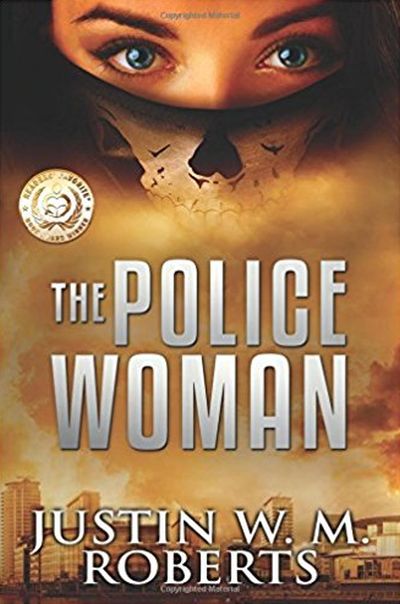 He also appears to have a background in police and/or military counter-terrorist services. His knowledge of S.W.A.T. (special weapons and tactics) terms and procedures, firearms specs, and both British and Indonesian police and military organization and organizational culture and traditions is extensive, to put it mildly, and he puts this to use in spades throughout the book. It’s noted at the beginning of the book that almost all of these tactics are “intentionally disguised” to protect police and military officers (so that baddies can’t use the book as a text to learn what to expect!), but it still has a very realistic feel. We’re in the hands of a writer who knows his stuff here; readers who need and want technical accuracy won’t be disappointed. For other readers like me, who don’t know one brand of firearm from another and have little technical knowledge of covert operations, much of this information will go over our heads, but it will still give a feeling of verisimilitude, and maybe impart some knowledge that will stick! (Seven and a half pages of glossaries of organizational “alphabet soup” and British, Indonesian and Irish military/police slang and terms and Gaelic –here spelled “Gaeilge”– phrases are provided; and if you’re anything like me, you’ll refer to them frequently.)
He also appears to have a background in police and/or military counter-terrorist services. His knowledge of S.W.A.T. (special weapons and tactics) terms and procedures, firearms specs, and both British and Indonesian police and military organization and organizational culture and traditions is extensive, to put it mildly, and he puts this to use in spades throughout the book. It’s noted at the beginning of the book that almost all of these tactics are “intentionally disguised” to protect police and military officers (so that baddies can’t use the book as a text to learn what to expect!), but it still has a very realistic feel. We’re in the hands of a writer who knows his stuff here; readers who need and want technical accuracy won’t be disappointed. For other readers like me, who don’t know one brand of firearm from another and have little technical knowledge of covert operations, much of this information will go over our heads, but it will still give a feeling of verisimilitude, and maybe impart some knowledge that will stick! (Seven and a half pages of glossaries of organizational “alphabet soup” and British, Indonesian and Irish military/police slang and terms and Gaelic –here spelled “Gaeilge”– phrases are provided; and if you’re anything like me, you’ll refer to them frequently.)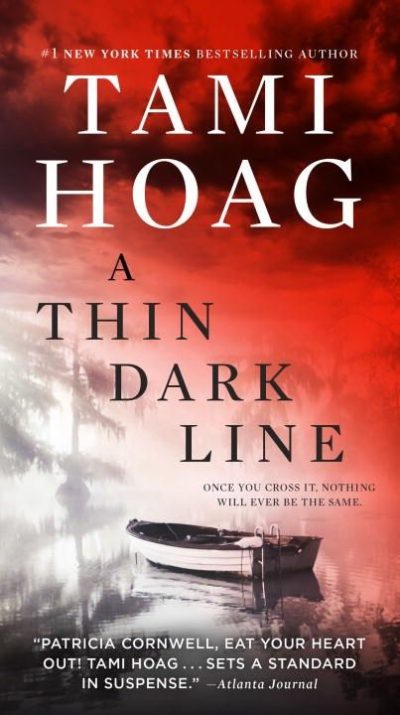 This is officially characterized (though not in the cover copy) as the fourth book of the author’s Doucet series. However, that nominal “series” is apparently very loosely connected, only by having main or other characters from the fictional Doucet clan; and a Doucet appears in this novel, though not as the protagonist. Our protagonists are sheriff’s deputies Nick Fourcade, a detective, and Annie Broussard, a uniformed deputy who’d like to be a detective. (The book is also counted as the opener of the Broussard and Fourcade series, which is apparently more connected; but it has a resolution to the mysteries involved in this volume, while leaving things open for new ones.)
This is officially characterized (though not in the cover copy) as the fourth book of the author’s Doucet series. However, that nominal “series” is apparently very loosely connected, only by having main or other characters from the fictional Doucet clan; and a Doucet appears in this novel, though not as the protagonist. Our protagonists are sheriff’s deputies Nick Fourcade, a detective, and Annie Broussard, a uniformed deputy who’d like to be a detective. (The book is also counted as the opener of the Broussard and Fourcade series, which is apparently more connected; but it has a resolution to the mysteries involved in this volume, while leaving things open for new ones.)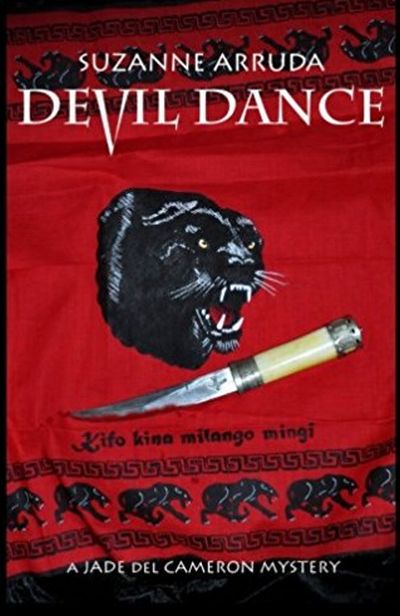 This final installment (the author confirms that fact in her Acknowledgments) of the series is set in May 1921, a few months after the previous one. The book’s opening finds Jade in Zanzibar, a new setting for her, which takes her out of the Nairobi area and away from her friends there. One reviewer complained about their absence, but as a compensation, we get to not only spend some more time with Jade’s formidable Spanish-born mother, Inez, but to meet Jade’s dad as well. Her parents have come to Africa for her impending nuptials, and she and Inez plan to enjoy a relaxing sight-seeing trip while Richard del Cameron gets acquainted with his new son-in-law on a planned safari.
This final installment (the author confirms that fact in her Acknowledgments) of the series is set in May 1921, a few months after the previous one. The book’s opening finds Jade in Zanzibar, a new setting for her, which takes her out of the Nairobi area and away from her friends there. One reviewer complained about their absence, but as a compensation, we get to not only spend some more time with Jade’s formidable Spanish-born mother, Inez, but to meet Jade’s dad as well. Her parents have come to Africa for her impending nuptials, and she and Inez plan to enjoy a relaxing sight-seeing trip while Richard del Cameron gets acquainted with his new son-in-law on a planned safari.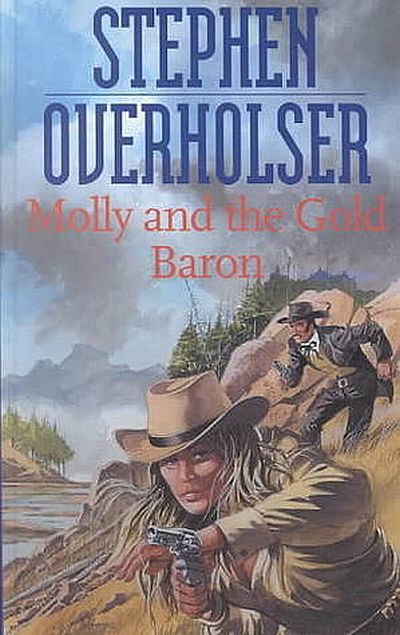
 This sixth installment in Arruda’s outstanding series has much in common, in terms of style and other characteristics, with the preceding five. We pick up here in February 1921, and our setting is the familiar one of Nairobi and its environs; all or most of the supporting cast we’ve come to like are here, as well as Jade herself.
This sixth installment in Arruda’s outstanding series has much in common, in terms of style and other characteristics, with the preceding five. We pick up here in February 1921, and our setting is the familiar one of Nairobi and its environs; all or most of the supporting cast we’ve come to like are here, as well as Jade herself. Lance Charnes and I are Goodreads friends, having “met” (electronically) a few years ago through the Action Heroine Fans group. Some time ago, I bought a copy of his outstanding debut novel, Doha 12, and it got five stars from me. This new novel, the opener for a projected series, didn’t come to me as an official review copy –instead, Lance generously donated a print copy to the library where I work– but he knew I would read and review it, and knew my tastes well enough to be pretty sure I’d like it. Of course, we both understood that he might be wrong –but he wasn’t! For much of my reading experience, I expected to rate the book four stars –a denouement and conclusion that blew me to pieces and then knit me back together easily pushed it up to five stars.
Lance Charnes and I are Goodreads friends, having “met” (electronically) a few years ago through the Action Heroine Fans group. Some time ago, I bought a copy of his outstanding debut novel, Doha 12, and it got five stars from me. This new novel, the opener for a projected series, didn’t come to me as an official review copy –instead, Lance generously donated a print copy to the library where I work– but he knew I would read and review it, and knew my tastes well enough to be pretty sure I’d like it. Of course, we both understood that he might be wrong –but he wasn’t! For much of my reading experience, I expected to rate the book four stars –a denouement and conclusion that blew me to pieces and then knit me back together easily pushed it up to five stars.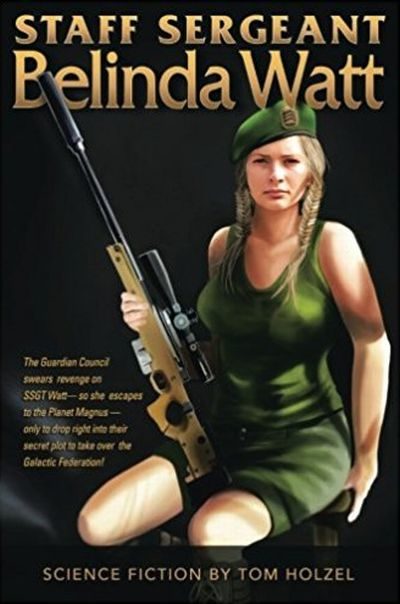 This self-published novel was recently donated by the author to the library where I work, a kindness that we appreciate. The author and I are both members of the Action Heroine Fans group here on Goodreads, and I was intrigued by his posts there about the book. Understanding (from experience!) the frustrations of waiting for reviews in today’s glutted book market, and being a fan of kick-butt female protagonists myself, I’d hoped to help him out with a good review, though he didn’t donate the book with any such expectation. As my rating indicates, my reaction wasn’t as positive as I’d hoped, so I would have refrained from writing a review at all; but Tom graciously indicated that he didn’t have a problem with a less than stellar review.
This self-published novel was recently donated by the author to the library where I work, a kindness that we appreciate. The author and I are both members of the Action Heroine Fans group here on Goodreads, and I was intrigued by his posts there about the book. Understanding (from experience!) the frustrations of waiting for reviews in today’s glutted book market, and being a fan of kick-butt female protagonists myself, I’d hoped to help him out with a good review, though he didn’t donate the book with any such expectation. As my rating indicates, my reaction wasn’t as positive as I’d hoped, so I would have refrained from writing a review at all; but Tom graciously indicated that he didn’t have a problem with a less than stellar review.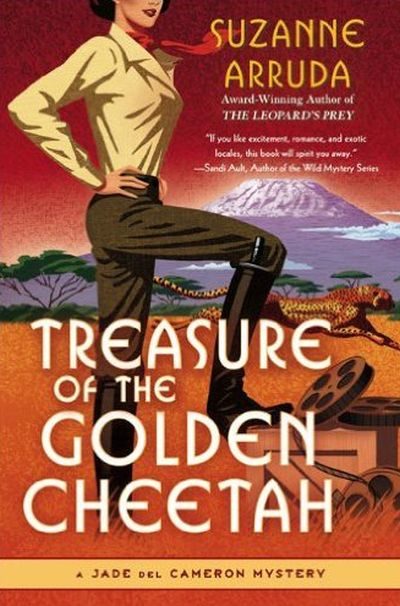 In the 10th century B.C., the kingdom of Sheba (or Saba –the S and Sh sounds were still fluid in the Semitic alphabets of that day) straddled the Arabic and African sides of the southern entrance to the Red Sea, and enjoyed considerable income from its control of that trade route. Both the Old Testament books of I Kings and II Chronicles record a state visit by the Queen of Sheba to King Solomon. Neither of these writers record her name (it varies in the legends, but the most common name given is Balkis or Belkis –English transliterations vary) or much about her, and written records from Sheba at this time have not survived; but she’s also mentioned in the Koran. Jewish, Arabic and Ethiopian legends (the latter written down in the ancient writing Kebra Negast, or “Glory of Kings”) some of which probably preserve actual handed-down oral history, greatly elaborate the story, and the latter makes Solomon out to be the father of her son and heir, Menelik. (The royal house of Ethiopia historically claimed descent from Solomon through Menelik.) The legends of the Masai and other African peoples south of Ethiopia also credit Menelik with a great (and obviously historically memorable) expedition through their territories. This real-life material provides the basis for Jade del Cameron’s fifth adventure.
In the 10th century B.C., the kingdom of Sheba (or Saba –the S and Sh sounds were still fluid in the Semitic alphabets of that day) straddled the Arabic and African sides of the southern entrance to the Red Sea, and enjoyed considerable income from its control of that trade route. Both the Old Testament books of I Kings and II Chronicles record a state visit by the Queen of Sheba to King Solomon. Neither of these writers record her name (it varies in the legends, but the most common name given is Balkis or Belkis –English transliterations vary) or much about her, and written records from Sheba at this time have not survived; but she’s also mentioned in the Koran. Jewish, Arabic and Ethiopian legends (the latter written down in the ancient writing Kebra Negast, or “Glory of Kings”) some of which probably preserve actual handed-down oral history, greatly elaborate the story, and the latter makes Solomon out to be the father of her son and heir, Menelik. (The royal house of Ethiopia historically claimed descent from Solomon through Menelik.) The legends of the Masai and other African peoples south of Ethiopia also credit Menelik with a great (and obviously historically memorable) expedition through their territories. This real-life material provides the basis for Jade del Cameron’s fifth adventure.